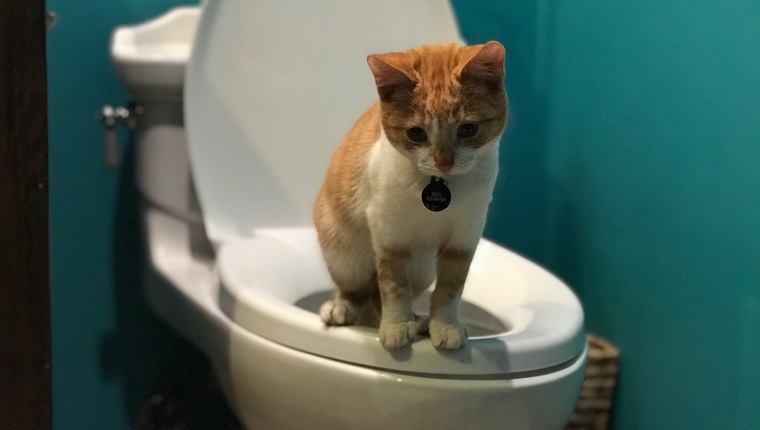On this page below you will find lots of extremely good tips related to Don’t flush cat feces down the toilet.

Intro
As feline proprietors, it's vital to bear in mind just how we deal with our feline buddies' waste. While it may appear hassle-free to purge feline poop down the toilet, this practice can have detrimental effects for both the setting and human health and wellness.
Alternatives to Flushing
Thankfully, there are more secure and a lot more accountable ways to take care of feline poop. Consider the adhering to alternatives:
1. Scoop and Dispose in Trash
One of the most usual technique of dealing with pet cat poop is to scoop it into a naturally degradable bag and throw it in the trash. Make certain to make use of a dedicated trash scoop and throw away the waste immediately.
2. Usage Biodegradable Litter
Go with eco-friendly cat trash made from products such as corn or wheat. These clutters are environmentally friendly and can be securely dealt with in the garbage.
3. Bury in the Yard
If you have a lawn, take into consideration burying feline waste in an assigned area far from veggie yards and water sources. Make certain to dig deep adequate to prevent contamination of groundwater.
4. Install a Pet Waste Disposal System
Purchase a family pet garbage disposal system especially created for feline waste. These systems utilize enzymes to break down the waste, minimizing odor and environmental impact.
Health Risks
Along with ecological issues, flushing pet cat waste can likewise position health threats to people. Cat feces might consist of Toxoplasma gondii, a parasite that can create toxoplasmosis-- a potentially extreme health problem, particularly for expectant women and people with weakened body immune systems.
Environmental Impact
Purging cat poop introduces harmful microorganisms and parasites into the water supply, positioning a substantial threat to water ecosystems. These pollutants can adversely influence marine life and compromise water high quality.
Final thought
Liable pet dog ownership extends beyond offering food and sanctuary-- it also includes correct waste monitoring. By refraining from flushing pet cat poop down the commode and selecting alternate disposal approaches, we can reduce our ecological impact and protect human health and wellness.
Why Can’t I Flush Cat Poop?
It Spreads a Parasite
Cats are frequently infected with a parasite called toxoplasma gondii. The parasite causes an infection called toxoplasmosis. It is usually harmless to cats. The parasite only uses cat poop as a host for its eggs. Otherwise, the cat’s immune system usually keeps the infection at low enough levels to maintain its own health. But it does not stop the develop of eggs. These eggs are tiny and surprisingly tough. They may survive for a year before they begin to grow. But that’s the problem.
Our wastewater system is not designed to deal with toxoplasmosis eggs. Instead, most eggs will flush from your toilet into sewers and wastewater management plants. After the sewage is treated for many other harmful things in it, it is typically released into local rivers, lakes, or oceans. Here, the toxoplasmosis eggs can find new hosts, including starfish, crabs, otters, and many other wildlife. For many, this is a significant risk to their health. Toxoplasmosis can also end up infecting water sources that are important for agriculture, which means our deer, pigs, and sheep can get infected too.
Is There Risk to Humans?
There can be a risk to human life from flushing cat poop down the toilet. If you do so, the parasites from your cat’s poop can end up in shellfish, game animals, or livestock. If this meat is then served raw or undercooked, the people who eat it can get sick.
In fact, according to the CDC, 40 million people in the United States are infected with toxoplasma gondii. They get it from exposure to infected seafood, or from some kind of cat poop contamination, like drinking from a stream that is contaminated or touching anything that has come into contact with cat poop. That includes just cleaning a cat litter box.
Most people who get infected with these parasites will not develop any symptoms. However, for pregnant women or for those with compromised immune systems, the parasite can cause severe health problems.
How to Handle Cat Poop
The best way to handle cat poop is actually to clean the box more often. The eggs that the parasite sheds will not become active until one to five days after the cat poops. That means that if you clean daily, you’re much less likely to come into direct contact with infectious eggs.
That said, always dispose of cat poop in the garbage and not down the toilet. Wash your hands before and after you clean the litter box, and bring the bag of poop right outside to your garbage bins.
https://trenchlesssolutionsusa.com/why-cant-i-flush-cat-poop/
I stumbled upon that piece of writing on How to Dispose of Cat Poop and Litter Without Plastic Bags when doing a lookup on the web. Sharing is caring. Helping people is fun. Thanks a lot for your time. Please check up our site back soon.
Schedule An Appointment